
Dactylorhiza hatagirea
(MRP Inclusive of all taxes)
- Shipping ₹79 for entire order
- Dispatch in 7 days
- Country of origin: India

(MRP Inclusive of all taxes)
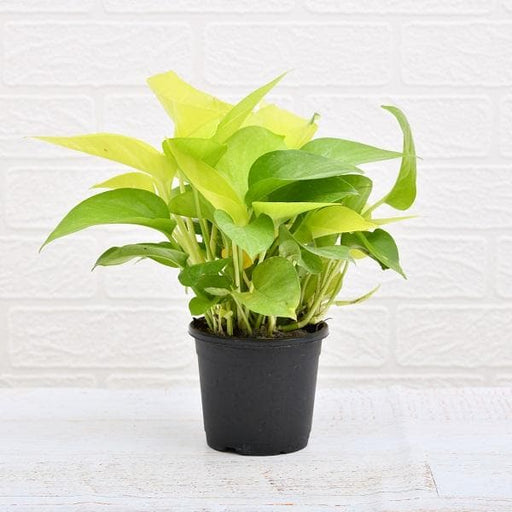 Save 29%
Save 29%
Air Purifier Money Plant with Pot The Air Purifier Money Plant, also known as Pothos or Epipremnum aureum, is a stunning indoor plant that...
View full details
 Save up to 15%
Save up to 15%
Peace Lily, Spathiphyllum - Plant The Peace Lily, scientifically known as Spathiphyllum, is a stunning houseplant celebrated for its elegant white...
View full details
 Save 25%
Save 25%
Jasminum sambac, Mogra, Arabian Jasmine - Plant Jasminum sambac, commonly known as Mogra or Arabian Jasmine, is a fragrant flowering plant...
View full details
 Save 18%
Save 18%
Combo Constituents Includes the Parijat Tree (Night-Flowering Jasmine), a culturally significant plant with fragrant flowers. Description The Pari...
View full details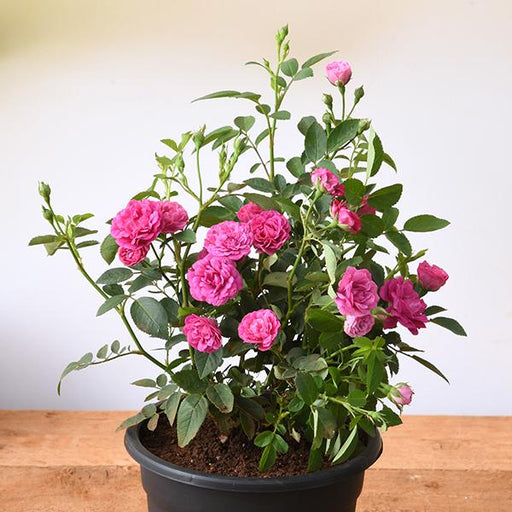
 Save 25%
Save 25%
Miniature Rose, Button Rose (Any Color) - Plant The Miniature Rose, also known as the Button Rose, is a charming and compact flowering plant that ...
View full details Save 25%
Save 25%
Damascus Rose, Scented Rose (Any Color) - Plant The Damascus Rose, also known as Rosa damascena, is a timeless symbol of beauty and romanc...
View full details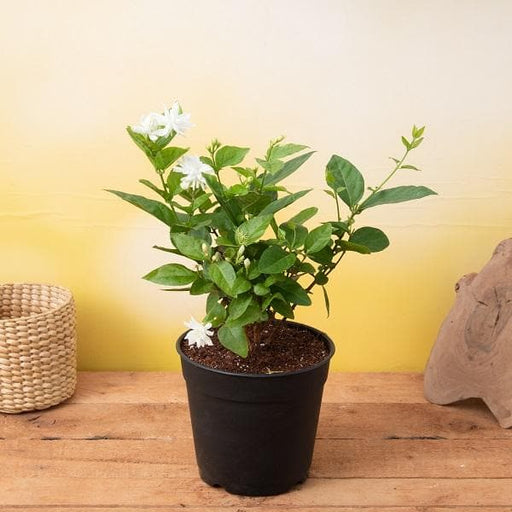
 Save 17%
Save 17%
Beautiful Fragrant Mogra, Arabian Jasmine Plant with Pot The Beautiful Fragrant Mogra, also known as Arabian Jasmine (Jasminum sambac), is...
View full details Save 15%
Save 15%
Pack of Vermicompost and Neem Cake for House Plants Transform your indoor garden with our premium Pack of Vermicompost and Neem Cake, spec...
View full details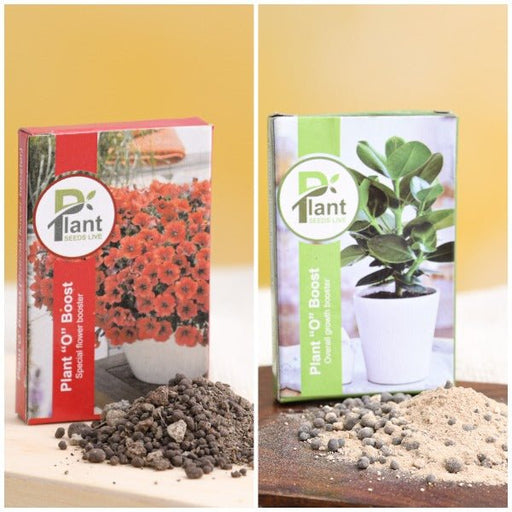
Pack of Plant Growth and Flower Boosters Unlock the full potential of your garden with our Pack of Plant Growth and Flower Boosters! This ...
View full details Save 38%
Save 38%
Combo of Jeevamrut and Neem Raksha for Easy Growth and Protection of Houseplants Transform your indoor garden with our exclusive combo of ...
View full details Save 22%
Save 22%
Plant Nutrients Kit (Pack of 16) for a Healthy Garden Transform your garden into a lush paradise with our Plant Nutrients Kit, featuring 1...
View full details Save 16%
Save 16%
Combo of Top Plant Fertilizers Elevate your gardening game with our exclusive Combo of Top Plant Fertilizers, featuring two bags of premiu...
View full details Save 24%
Save 24%
Pack of 4 Additives to Make Soil Healthy and Nutrient Rich Transform your garden into a thriving ecosystem with our Pack of 4 Additives de...
View full details Save 30%
Save 30%
Transform your gardening experience with our premium Combo of Perlite and Vermiculite. This unique blend is designed to enhance soil aeration and ...
View full details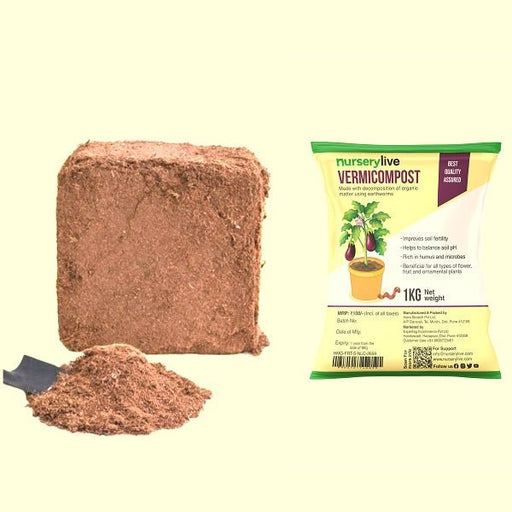 Save 27%
Save 27%
Combo of 2 Vermicompost and Cocopeat - Enrich Your Soil Naturally! Transform your garden into a thriving ecosystem with our Combo of 2 Ver...
View full details
 Save 35%
Save 35%
Best 6 Plants for Perfect Indoor Garden Transform your living space into a lush oasis with our curated collection of the Best 6 Plants for a...
View full details
 Save up to 50%
Save up to 50%
Mini Succulent Garden Pack Transform your space with our Mini Succulent Garden Pack, featuring a delightful collection of 4 any variety beautiful s...
View full details
 Save 30%
Save 30%
5 Best Fragrant Plants Transform your garden or indoor space into a fragrant paradise with our curated selection of the 5 Best Fragrant Plants. Th...
View full details
 Save 24%
Save 24%
Set of 2 Bonsai Looking Grafted Adeniums Transform your indoor or outdoor space with our exquisite Set of 2 Bonsai Looking Grafted Adenium...
View full details Save 45%
Save 45%
Top 4 Die Hard Succulents Pack Transform your indoor or outdoor space with our Top 4 Die Hard Succulents Pack, featuring a curated selecti...
View full details
 Save 30%
Save 30%
5 Best Indoor Plants Pack Transform your living space into a lush oasis with our '5 Best Indoor Plants Pack.' This carefully curated collection fe...
View full details
 Save 25%
Save 25%
Set of 4 Evergreen Air Purifier Plant Pack Transform your indoor space into a lush, green oasis with our Set of 4 Evergreen Air Purifier Pla...
View full details| SrNo | Item Name |
|---|---|
| 1 | Dactylorhiza hatagirea |
Dactylorhiza hatagirea, commonly known as the Himalayan Orchid, is a stunning perennial plant native to the alpine regions of the Himalayas. This exquisite orchid is renowned for its vibrant purple flowers and unique leaf structure, making it a prized addition to any garden or landscape. Thriving in rocky, well-drained soils, it adds a touch of elegance and natural beauty to its surroundings.
What makes Dactylorhiza hatagirea special is its adaptability to harsh mountain climates, showcasing resilience and beauty. This orchid is not only a visual delight but also plays a crucial role in its ecosystem, supporting local biodiversity. Its rarity and cultural significance in traditional medicine further enhance its allure, making it a sought-after species among collectors and horticulturists alike.
One of the special features of Dactylorhiza hatagirea is its ability to thrive in high altitudes, often found at elevations of 2,500 to 4,500 meters. This orchid's unique morphology allows it to withstand extreme weather conditions, making it a symbol of endurance in the plant kingdom. Its striking flowers bloom in late spring to early summer, attracting pollinators and adding vibrant color to alpine meadows.
This enchanting orchid thrives in the cool, moist meadows and alpine regions of the Himalayas. Picture it as the diva of the plant world, demanding just the right amount of sunlight and water to strut its stuff. It’s like the Goldilocks of flora—too much or too little, and it simply won’t bloom.
This plant isn’t just a pretty face; it’s got a PhD in traditional medicine! Used in various cultures for its healing properties, it’s like the herbal superhero of the Himalayas, swooping in to save the day with its anti-inflammatory and analgesic powers.
Sadly, this beauty is on the endangered list, making it the rarest of the rare. Think of it as the celebrity of the plant kingdom, needing protection from over-collection and habitat loss.
Want to grow your own Dactylorhiza hatagirea? It’s not as easy as pie! This diva requires specific conditions, so unless you’re ready to pamper it like a royal, you might want to stick to houseplants.
This orchid has a secret admirer—bees! They’re the matchmakers of the plant world, helping Dactylorhiza hatagirea reproduce. It’s a love story that involves sweet nectar and a bit of pollen drama.
With its striking flowers and unique leaves, this plant is like the fashionista of the orchid family. Its morphology is a blend of elegance and practicality, designed to attract pollinators while looking fabulous.
Found primarily in the Himalayas, this orchid has a limited but exclusive distribution. It’s like the VIP of the plant world, only appearing in select locations where it can truly shine.
When spring rolls around, Dactylorhiza hatagirea puts on its best show. The flowering season is a spectacle, with vibrant blooms that could make even the most stoic gardener swoon.
This orchid is a bit of a soil snob, preferring well-drained, nutrient-rich substrates. It’s like the high-maintenance friend who only dines at five-star restaurants.
From climate change to habitat destruction, this orchid faces numerous threats. It’s like a plant version of a survival reality show, battling against the odds to stay alive.
In various cultures, this orchid is more than just a plant; it’s a symbol of beauty and resilience. It’s like the Mona Lisa of the botanical world, inspiring art, folklore, and admiration.
Scientists are buzzing about Dactylorhiza hatagirea, studying its unique properties and potential benefits. It’s like the subject of a thrilling detective novel, with researchers piecing together its mysteries one leaf at a time.
Dactylorhiza hatagirea, also known as the Himalayan orchid, is a stunning plant native to the high altitudes of the Himalayas. With its vibrant flowers and unique appearance, it’s the diva of the orchid world, demanding attention and admiration from all who encounter it.
You’ll need to embark on a Himalayan adventure! Dactylorhiza hatagirea thrives in the alpine meadows and rocky slopes of the Himalayas. So, pack your bags, lace up your hiking boots, and prepare for a floral treasure hunt in the heights of nature’s playground.
This diva prefers well-drained soil, plenty of sunlight, and a cool climate. Think of it as the Goldilocks of orchids—too hot or too wet, and it’ll throw a tantrum. Aim for a spot that’s just right, and it’ll reward you with its stunning blooms.
Yes, it’s on the endangered list! Overharvesting and habitat loss have put this beauty at risk. So, if you spot one, admire it from a distance and spread the word about conservation. Let’s keep this orchid thriving for future generations to enjoy!
Propagation can be tricky, but it’s not impossible! You can try division or seed propagation, but patience is key. Just remember, good things come to those who wait—like a blooming Dactylorhiza hatagirea that’ll make your garden the talk of the town!
Traditionally, this orchid has been used in herbal medicine for its potential health benefits. It’s believed to have anti-inflammatory and analgesic properties. However, always consult a healthcare professional before trying any herbal remedies—no one wants a floral fiasco!
While it prefers the great outdoors, you can attempt to grow Dactylorhiza hatagirea indoors with the right conditions. Ensure it gets enough light and cool temperatures. Just remember, it’s a high-altitude diva that might not appreciate your cozy living room!
Like any diva, Dactylorhiza hatagirea can attract unwanted guests! Watch out for aphids and slugs, which can wreak havoc on its beauty. Keep an eye out and use organic pest control methods to ensure your orchid remains the star of the show.
Typically, this orchid blooms for about 4 to 6 weeks during the summer months. It’s a short but spectacular show, so make sure to enjoy every moment! After all, like all good things, its beauty is fleeting—so don’t blink!
This orchid loves cool temperatures, ideally between 15-20°C (59-68°F). It’s not a fan of the heat, so keep it cool and comfortable. Think of it as the ultimate snow-loving diva, always seeking that perfect chill!
Yes, it can! Dactylorhiza hatagirea is quite the tough cookie, able to withstand cold winters. Just ensure it’s planted in well-drained soil to prevent root rot. It’s like a winter warrior, ready to bloom again when the sun returns!